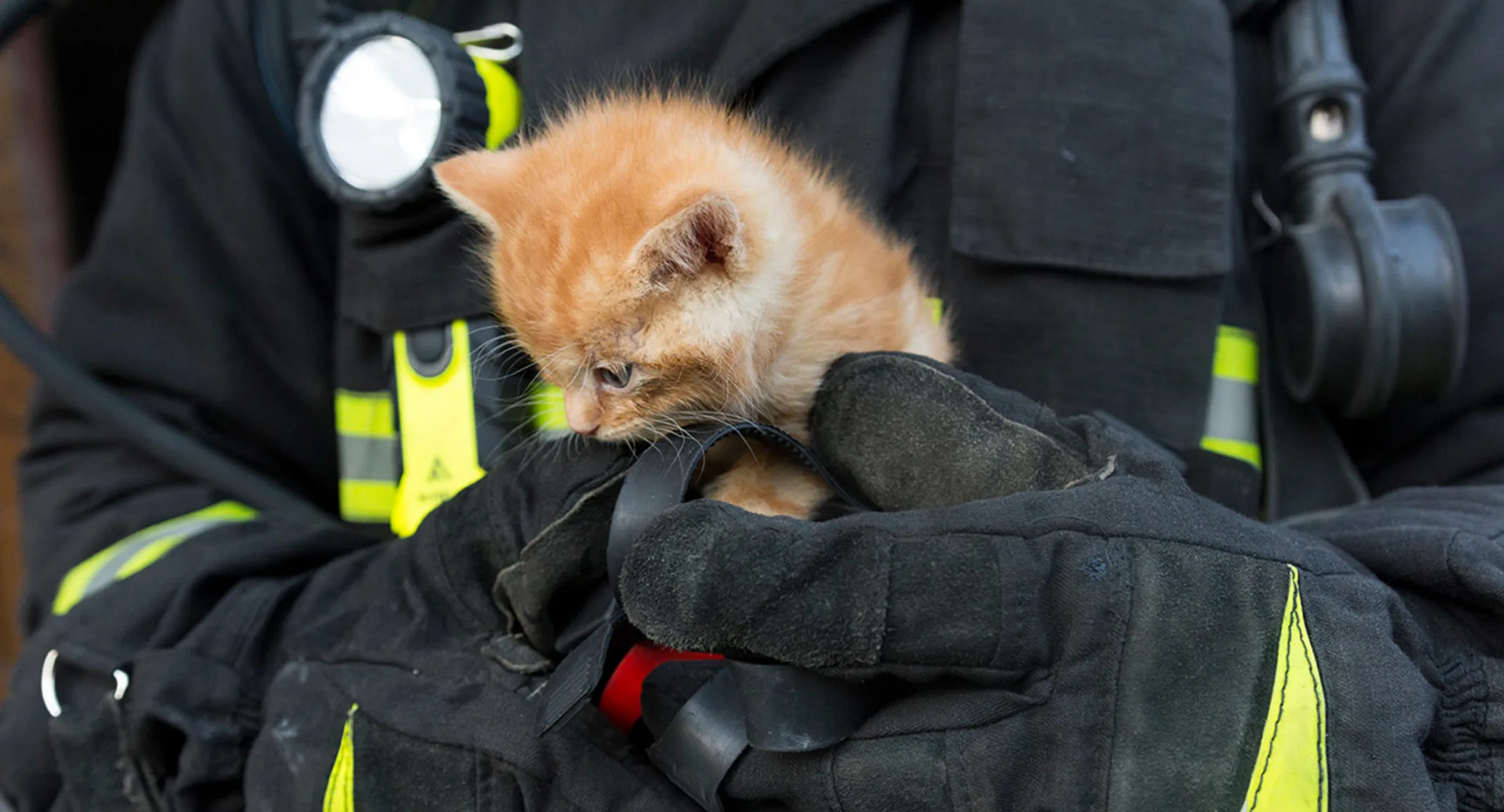6 Fire Safety Tips for Pet Owners
Tips and Tricks

If your home caught fire, would your pet obediently follow you through the door to safety? More likely, your pet would retreat to a familiar safe place in your home during a scary situation. Sadly, all too often, firefighters find family pets under furniture, in closets, or curled up tight in their beds, frozen in their final moments. Follow these six tips to ensure your beloved pet gets out of a house fire alive.
#1: Make firefighters aware that you own a pet
One of the main reasons pets perish in fires is that firefighters do not know a pet is in the home. You can quickly remedy this with a sticker on your front door or window—many fire departments and veterinary offices offer stickers to notify firefighters that a pet lives in the home and may need saving. The stickers, which often read “Save my pet,” typically include room to fill in the number, type, and names of your pets.
It may also be a good idea to alert 911 of any pets remaining in the home when calling in the emergency. Be sure to mention the number and type of pets still in the home so the firefighters on scene know what to look for.
#2: Know your pet’s “safe spot”
Watch your pet when they become stressed or frightened, and allow them to seek out a hiding spot. This will reveal your pet’s natural “safe spot,” where you are most likely to find them in an emergency. This is the location to share with firefighters to help guide their search.
#3: Include your pet in family fire drills
Studies show that less than 30% of families practice home fire drills, and likely fewer include their pet. To ensure your entire family escapes safe and sound, draw up a fire exit strategy that you practice monthly. Designate a person to grab each pet, reminding them to check the pet’s favorite sleeping spot and safe spot. If possible, train your pet to sleep in a pet bed that is close
to a safe area, so the responsible person does not have to move through too many areas of your burning home.
Keep in mind that seeking safety is deeply ingrained in your pet, and they may run back into a burning building to reach their safe spot. Teach your family members to hold pets tightly after getting to safety, to prevent them from returning to danger. Your pet will be extremely anxious in an emergency situation, so you need to reassure them, and to keep calm yourself.
#4: Understand your pet’s reaction to smoke alarms
People understand that a smoke alarm’s shrill sound is a source of safety, but pets do not understand its purpose and will likely be afraid. Although animals are naturally sensitive to high-pitched noises, you can try to condition your pet to the sound by having a family member lavish your pet with attention and treats when you test the smoke alarm each month. This can help your pet form a more positive association with the sound. Keep in mind that some pets will never acclimate to the abrupt noise, and will seek refuge in their safe spot as soon as the alarm sounds.
#5: Know whether your fire department has pet oxygen masks
Fire hazards such as smoke inhalation and carbon monoxide exposure are equally dangerous to pets and people. Many fire departments carry specially fitted pet oxygen masks that allow life-saving oxygen to be delivered on the spot through the pet’s muzzle. Oxygen delivery during transport to an emergency veterinary hospital can increase your pet’s survival chances, so ask your local fire department whether they have pet-specific oxygen masks, and consider raising funds to help them purchase the equipment, if necessary.
#6: Pet-proof your home to prevent a fire
An inquisitive or rambunctious pet can accidentally start a fire by knocking over a candle with their tail or chewing an electrical cord. Prevent your pet from causing a fire by taking the following precautions:
Candles — Place all lit candles where a wagging tail or curious paw cannot accidentally topple them. Consider using battery-operated flameless candles if your puppy or kitten’s mission is getting into mischief.
Electrical cords — Hide electrical cords out of reach of pets, especially puppies who like to chew on everything they can find.
Fireplaces — Watch your pet closely around your fireplace. Although you may assume your pet will naturally stay away from the hot flames, you know what they say about curiosity and cats. Keep a grate around your fireplace and teach your pet that the area is off-limits.
Knowing how to react in an emergency situation can save your pet’s life. To ensure your pet is in tip-top health, and can safely escape a fire, keep their wellness care up to date. Use this locator to find a veterinarian near you.
